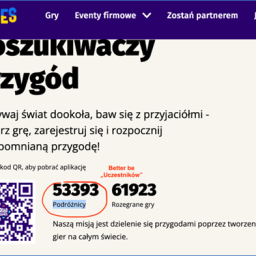
We are constantly facing deadlines in our private and professional lives, and we live at an increasingly faster pace. It often happens that customers need to translate large amounts of material in a short time.
For us as a translation agency, situations where a customer has an important meeting
next week or an unannounced audit due in a few days’ time, and needs a quick translation of documents that they have not been able to prepare beforehand, are all just part of the day.
We are often confronted with the task of organising the appropriate resources, not only for translators, but proofreaders as well. We may have to involve graphic designers, who professionally prepare the documents submitted to us for translation in non-editable formats, so that the translated files look like those received from the customer.
We often receive requests from a customer specialising in complex construction projects
in the areas of volume and infrastructure construction, for large-volume translations within a tight deadline. We have managed to complete projects many such jobs, like 400 pages to be translated in 5 working days, 790 pages to be translated (more than half of them non-editable pages requiring graphic conversion) in 10 working days. This compares to 400 pages translated in around 40 working days and 790 pages in almost 80 days in a standard mode. Not only did we manage to meet the expected deadline, but we also delivered the translations at the required level of quality. The obvious question is: how do we do it?
With such large projects, a team of translators is often involved, with each translator working on a separate part of the text. Splitting a large amount of material over several people gives us the ability to complete the translation within a deadline that a single translator would not be able to meet.
We also make use of modern technologies, such as Computer Aided Translation (CAT) tools, which allow us to maintain terminological consistency between files, as the software detects repetitions occurring in the text. A suggestion of a previously translated section is automatically displayed by the software, and the translator only has to accept or modify it accordingly.
We also use another type of specialised tool, automatic machine translation. We have several engines available for this task, but we are primarily developing our own proprietary tool, Skrivanek NMT, which is based on our many years of work and operates on the basis of neural networks.
There are 3 types of machine translation: raw machine translation, machine translation with basic, ‘light’ post-editing and the variant that the aforementioned customer chooses most often, i.e. machine translation with full post-editing, which results in a text of very similar quality to a human translation. Thanks to the use of machine translation, very large amounts of text become available to the post-editor for editing in a very short time. The great advantage of this is that the translator can convert a huge amount of machine-translated material in a relatively short period of time to a quality level that our customer has so far always satisfied them.
With all these tools and our positive approach, we are ready to take on any project – and are always happy to help you meet any translation needs, especially those urgent ones.
















